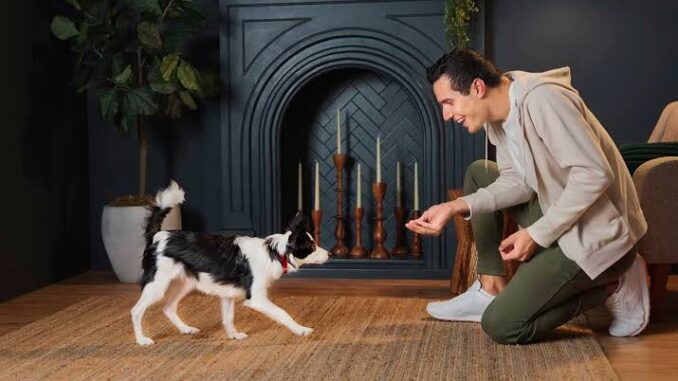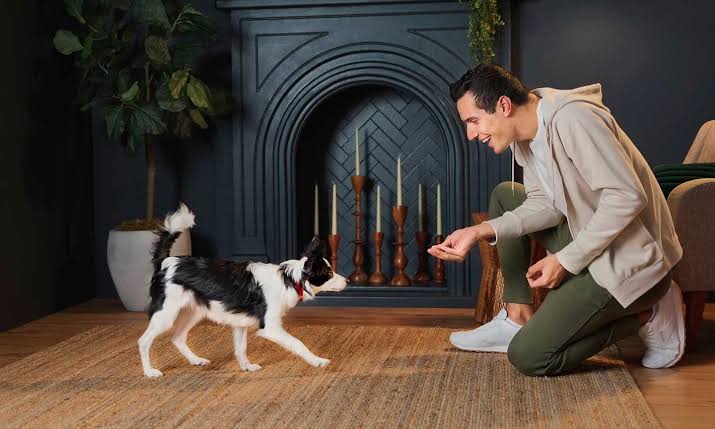
How to Train Your Dog to Come When Called: Training your dog to come when called often referred to as recall is one of the most important commands you can teach. It could save your dog’s life, enhance off-leash adventures, and strengthen your bond.

While it may seem simple, teaching a reliable recall takes consistency, patience, and the right techniques.
In this guide, we’ll walk through the step-by-step process to train your dog to come every time.
Why Recall Training Matters
A solid recall command means your dog comes to you regardless of distractions: traffic, wildlife, strangers, or exciting smells. It ensures safety, builds trust, and promotes off-leash freedom.
Reliable recall can:
- Prevent accidents (e.g., running into traffic)
- Help with dog park control
- Avoid conflicts with other dogs or animals
- Make outdoor adventures more enjoyable
Step-by-Step Guide to Training Recall
Step 1: Build Positive Associations
Before formal training begins, teach your dog that coming to you is always rewarding.
- Use high-value treats like chicken, cheese, or freeze-dried liver.
- Praise and celebrate every time your dog comes—even if not on command.
- Never call your dog to scold or punish.
Exercise:
Call your dog during play or in casual moments. Say their name cheerfully and offer a treat when they approach.
Step 2: Choose a Cue Word
Pick a unique recall word and stick with it. Common choices include:
- “Come”
- “Here”
- “Let’s go”
Avoid using the dog’s name as the recall cue alone. Pair it with a command: “Bella, come!”
Step 3: Start Indoors With No Distractions
Begin training in a quiet space like your living room.
How-to:
- Get your dog’s attention.
- Say “Come!” in a happy, enthusiastic voice.
- Back away slightly—movement encourages chasing.
- When your dog arrives, reward immediately with praise and a treat.
Repeat 5–10 times per session, keeping it fun and short.
Step 4: Add Distance and Use a Long Line
Once your dog understands recall at close range, gradually increase the distance.
- Use a long training leash (15–30 feet) in a safe area like a yard.
- Let your dog explore. Then call, “Come!” with excitement.
- Gently reel them in if needed, but reward only when they complete the recall on their own.
Consistency helps them connect the cue with positive outcomes.
Step 5: Practice in Controlled Distractions
Slowly increase the difficulty by practicing in areas with mild distractions:
- Backyard with birds or squirrels
- Quiet park
- Nearby when another dog is playing
Stay calm if your dog ignores you. Instead of repeating the command, go closer, re-engage, and try again with more enthusiasm.
Step 6: Reward Big and Keep It Random
To keep recall strong, don’t phase out rewards completely.
- Use variable rewards (sometimes a treat, sometimes a toy, or big praise).
- Occasionally offer a “jackpot” reward: extra treats or an exciting toy.
This keeps the dog guessing and increases their motivation.
Step 7: Practice Off-Leash in Safe Environments
When your dog has a reliable recall on a long line and with distractions, begin off-leash training in safe, enclosed areas.
- Use fenced parks or enclosed fields.
- Bring irresistible rewards.
- If your dog doesn’t respond, avoid chasing. Instead, run in the opposite direction—dogs often follow.
Off-leash recall requires ongoing reinforcement. Practice regularly and keep it fun.
READ ALSO: How to Help a Cat Recover from Surgery
Troubleshooting Common Problems
Problem 1: My dog ignores me when I call.
Fix:
- Use a higher-value treat.
- Lower distractions.
- Make your tone more engaging.
- Ensure you haven’t accidentally poisoned the command (e.g., calling them to end play or for punishment).
Problem 2: My dog comes slowly or only halfway.
Fix:
- Don’t reward partial recalls. Wait until they reach you.
- Reward generously for full recall.
- Try running backward or crouching to encourage full approach.
Problem 3: My dog comes only when they feel like it.
Fix:
- Be more consistent with practice.
- Use a leash or long line to prevent disobedience from becoming a habit.
- Increase the reward value for success.
Problem 4: My dog runs away when off-leash.
Fix:
- Go back to long-leash training in distractions.
- Reinforce positive associations with coming.
- Never chase your dog—it becomes a game.
Advanced Tips for Recall Training
1. Use a Release Word
Once your dog comes, don’t always end the fun. Use a word like “Okay!” to release them back to play. This prevents them from associating recall with the end of freedom.
2. Practice “Surprise” Recalls
Occasionally call your dog during free play just to reward and release them again. It builds a positive pattern and avoids predictability.
3. Play Recall Games
Keep training exciting with games:
- Recall Relay: Have multiple people take turns calling the dog.
- Hide and Seek: Hide and call your dog to find you.
- Chase Me: Run a few steps and reward when your dog follows.
4. Use Whistle Training
Dogs respond well to distinct, sharp sounds. Consider using a dog whistle for long-distance recall. Pair it with high-value rewards.
FAQs
At what age should I start recall training?
As early as 8 weeks old! Puppies are more likely to follow naturally. Older dogs can also learn recall—it just may take more repetition.
What if my rescue dog has no training background?
Start from the basics. Use patience and strong positive reinforcement. Avoid harsh corrections or frustration. Some rescue dogs may need extra time to trust and respond.
Can I ever stop giving treats?
Gradually move to variable rewards, but never eliminate rewards entirely. Mix in praise, petting, toys, and occasional big treats to keep the command reliable.
My dog only comes indoors. How do I fix that?
Practice recall in new, progressively more distracting environments. Dogs don’t generalize well, so repetition in different contexts is key.
Should I use an e-collar or shock collar for recall?
Generally, no. Positive reinforcement yields better, more humane results. E-collars can damage trust and increase anxiety, especially without professional guidance.
Leave a Reply
You must be logged in to post a comment.